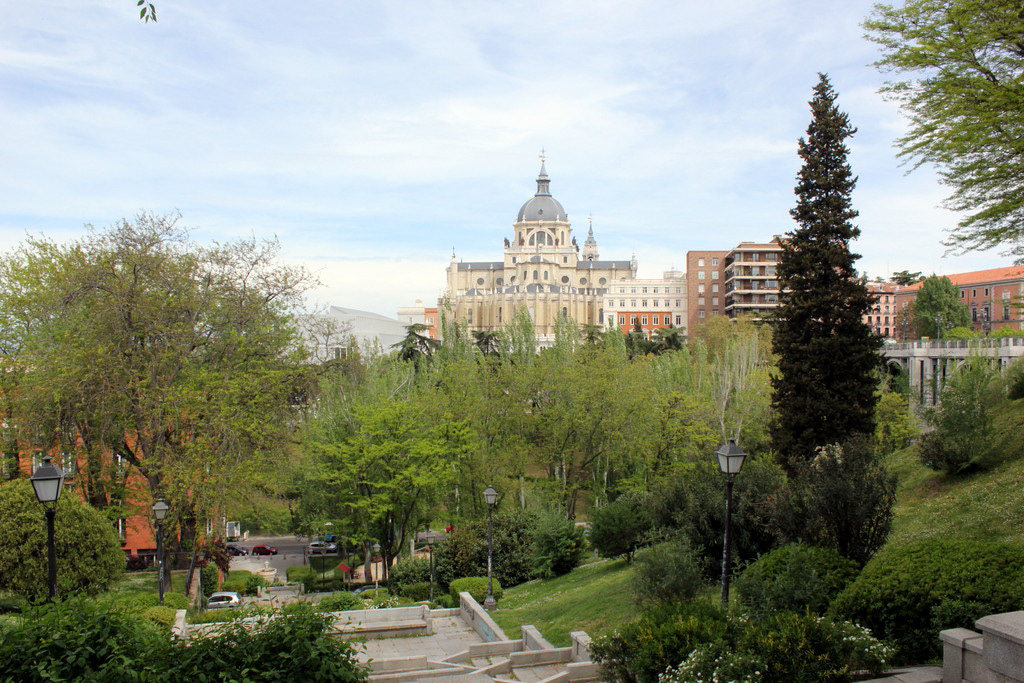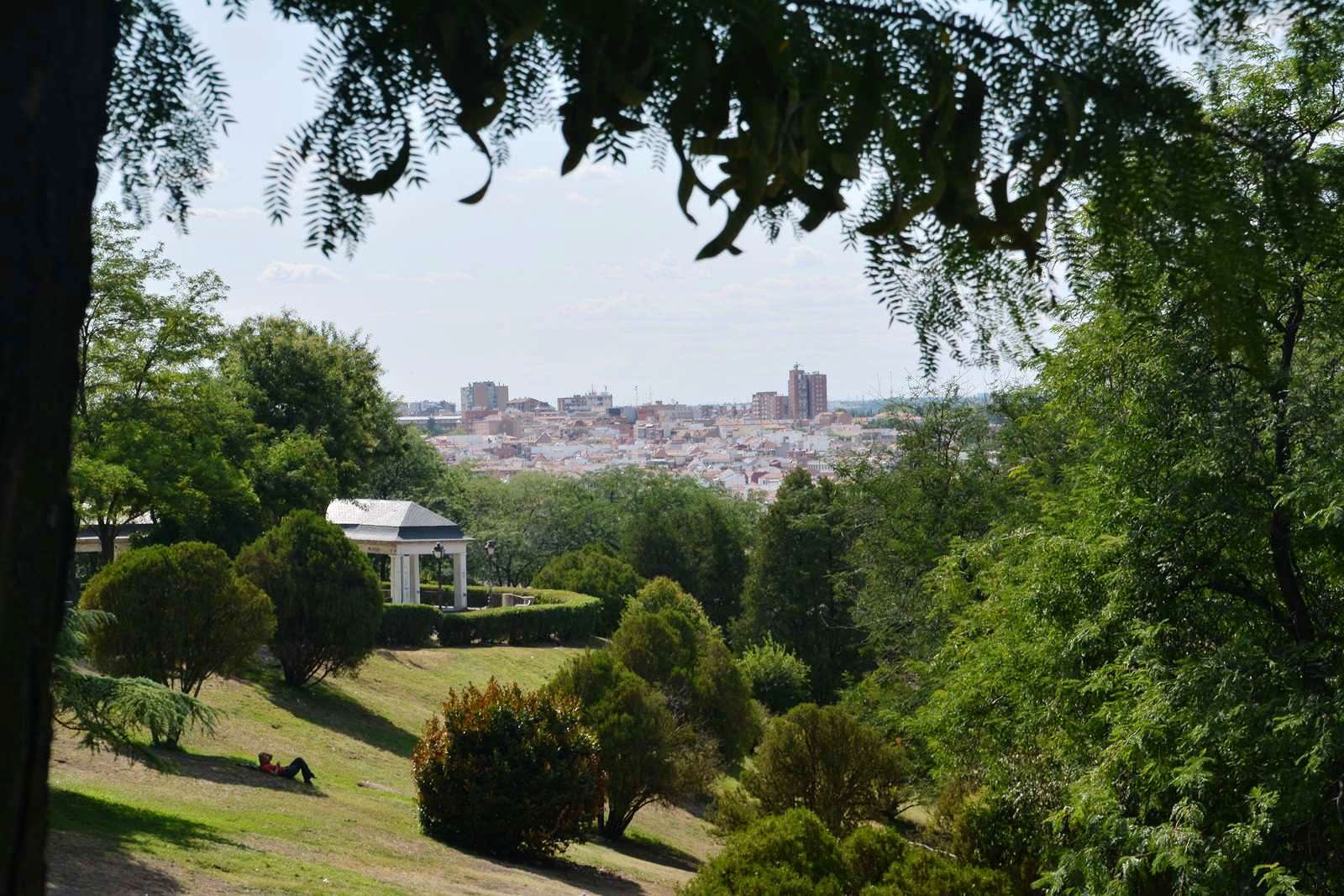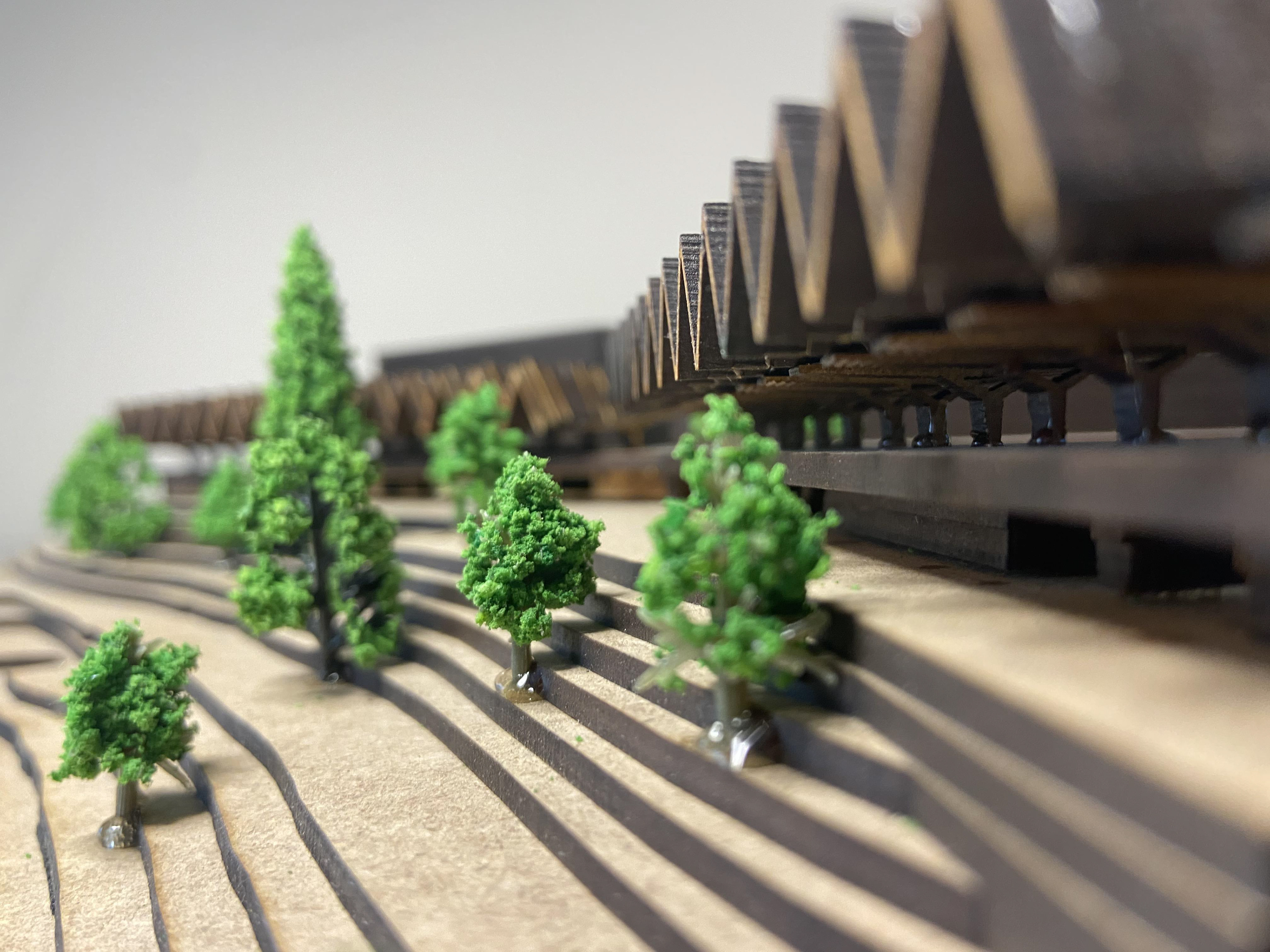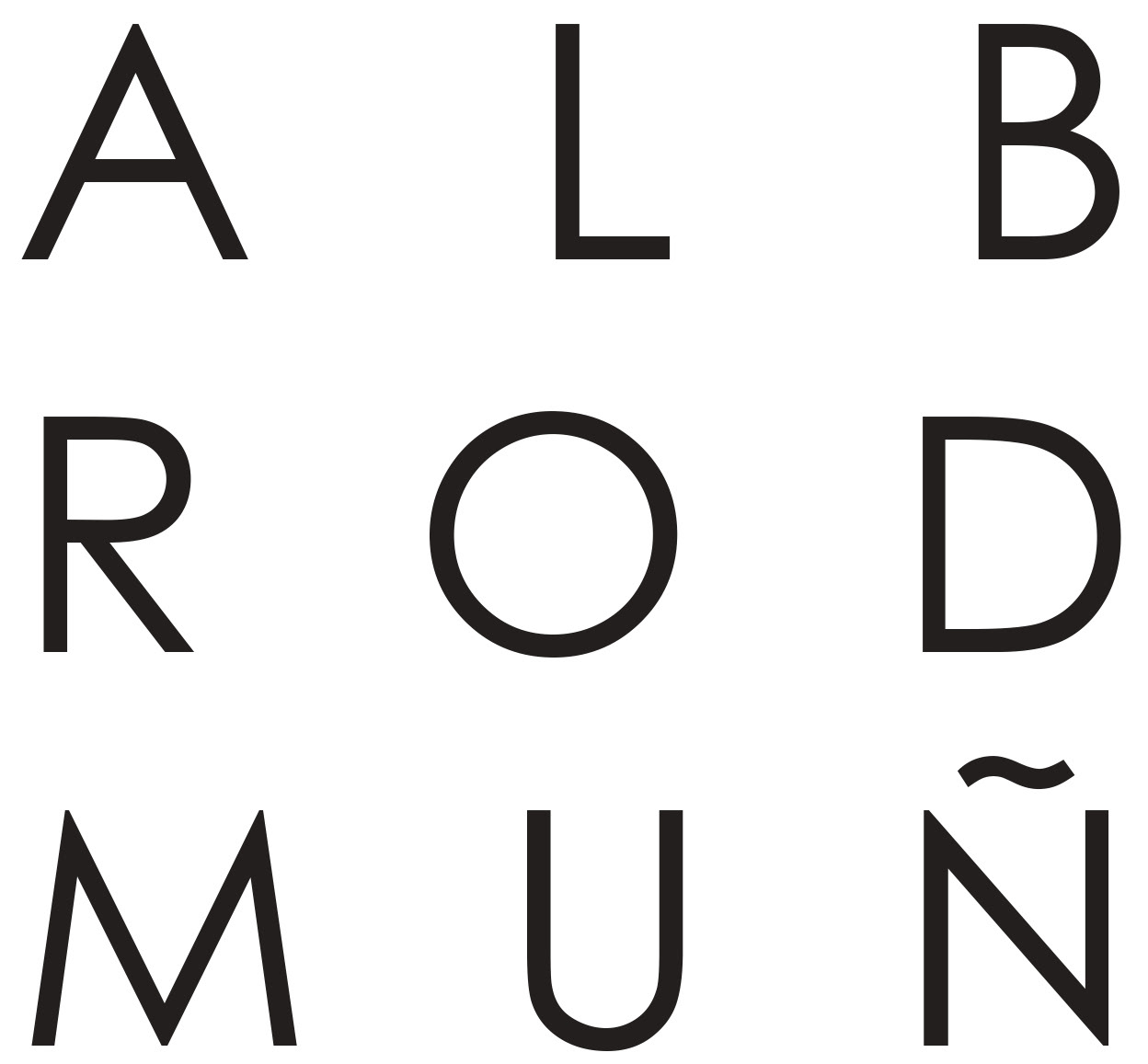This project has been awarded TERMINUS 21, given to the top final degree projects in the 2020-2021 Master's Degree in Architecture promotion of the University of Navarra.
The project is located in an emblematic and unique area within the city of Madrid, the "Jardines de Las Vistillas". These gardens stand out for their height above the rest of Madrid, forming dazzling views of its urban panorama.
Originally an area for social encounters and commerce an area that used to be magical has lost its splendor due to the lack of maintenance and some not very successful urban interventions. The paved plazas of "Las Vistillas" are currently very segmented and separated from the publicly inhabited areas, generating spaces with little visibility and consequently poor accessibility and security. Ironically, the most important component of the "Jardines de Las Visitillas", the gardens, lacks any entrance and is completely closed off to the public. In order to access these gardens one must hop over a short fence that encloses it´s perimeter.
The main objective of the project is to recover the splendor of these forgotten gardens and attain the magic they once had. Incorporating a fruit and flower market, the goal is to rehabilitate "Las Vistillas" giving it a new daily use. The intervention focuses mainly on two aspects, the urban and environmental aspect. More on the project down below.



The project consists of a large covered walkway open to the outside that becomes an extension of the natural landscape of "Las Vistillas" through its architectural dialogue. This walkway becomes a large viewpoint that provides spectacular views of the Almudena Cathedral located to the north of the project´s plot.
The repeating gable roof module is designed as a hyperboloid in order to accentuate the views generated below it, increasing the peak´s height as it approaches the Almudena Cathedral. Beneath the modular roof is located the flower and fruit market stalls. These stalls are designed as modular containers that are removable, giving the project a certain flexibility in the uses it can house. These same containers are also designed to be visually permeable in order to avoid obstructing the scenic views "Las Vistillas" has to offer.
With the aim of reconnecting the green space of the gardens with the rest of the city, the walkway is introduced along the perimeter that forms between the green and paved spaces using an architecture that is permeable to passage and views. This creates a dual purpose for the walkway, on the first floor it serves as a viewing gallery which houses the flower market and on the ground floor it serves as a gateway into the beautiful gardens as well as a hub for the fruit market stalls.


Regarding the environmental aspect of the project, several strategies were carried out. From the beginning of development, the project aimed to avoid major transformations to the topography, carrying out movements to the terrain only when it became essential. The materiality of the project is predominantly wood, with a structure made of laminated wood and walls and floors of CLT wood. The paved outdoor areas are made up of recycled granite from the current pavement of the gardens existing plazas, covering 67% of the new paved surface proposed by the intervention. The program has a closed and air-conditioned area that contains the administrative offices of the enclosure and three restaurants. Through various passive strategies, as well as a constructive design lacking thermal bridges and an aerothermal air conditioning system, we achieve Passivhaus Classic energy efficiency. Finally, the entire intervention has a rainwater collection and purification system for reuse in the irrigation of the orchards that serve the fruit market.
